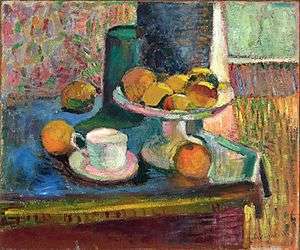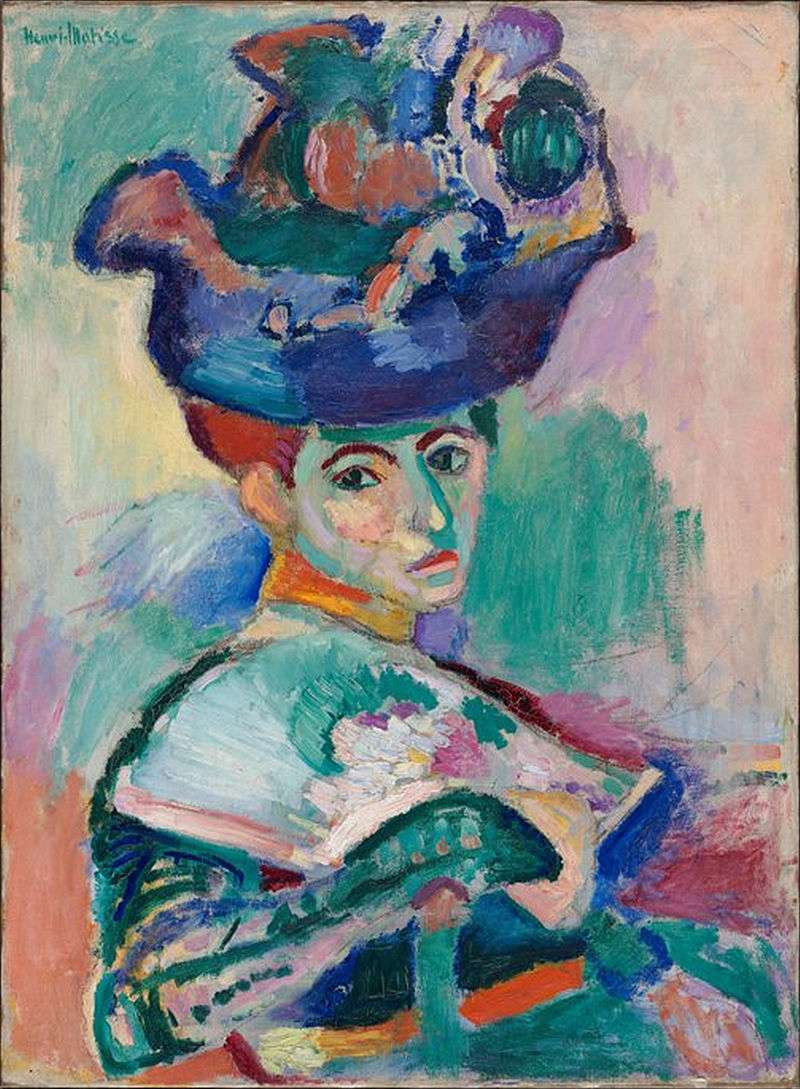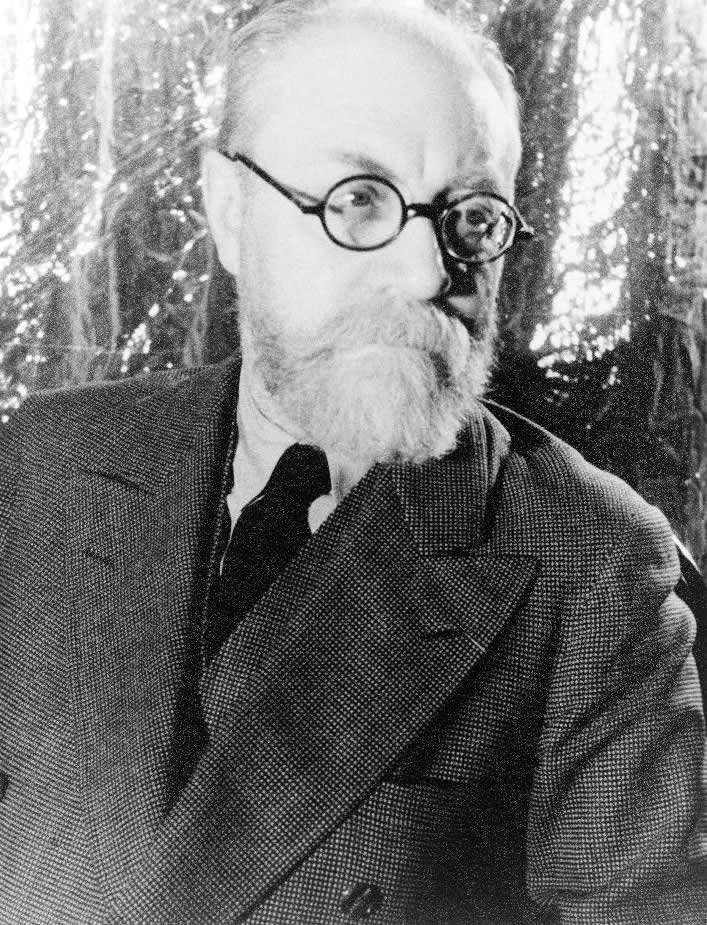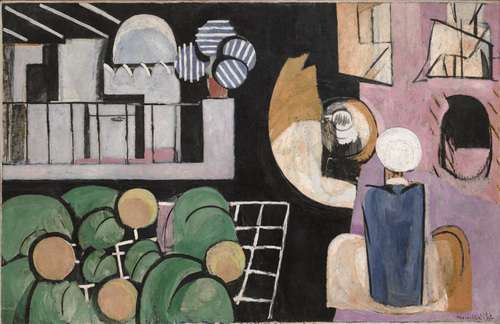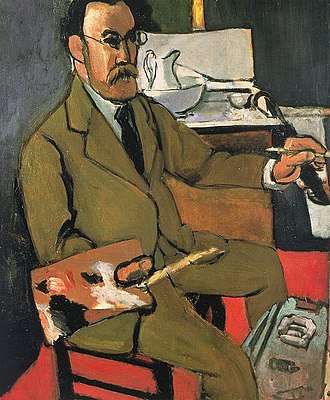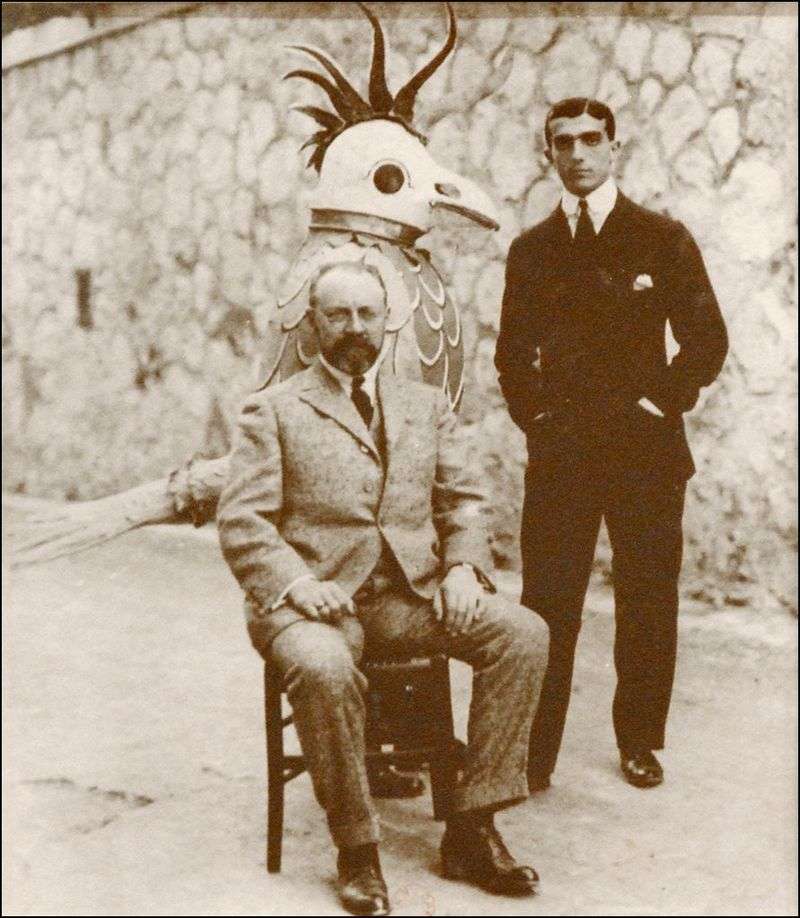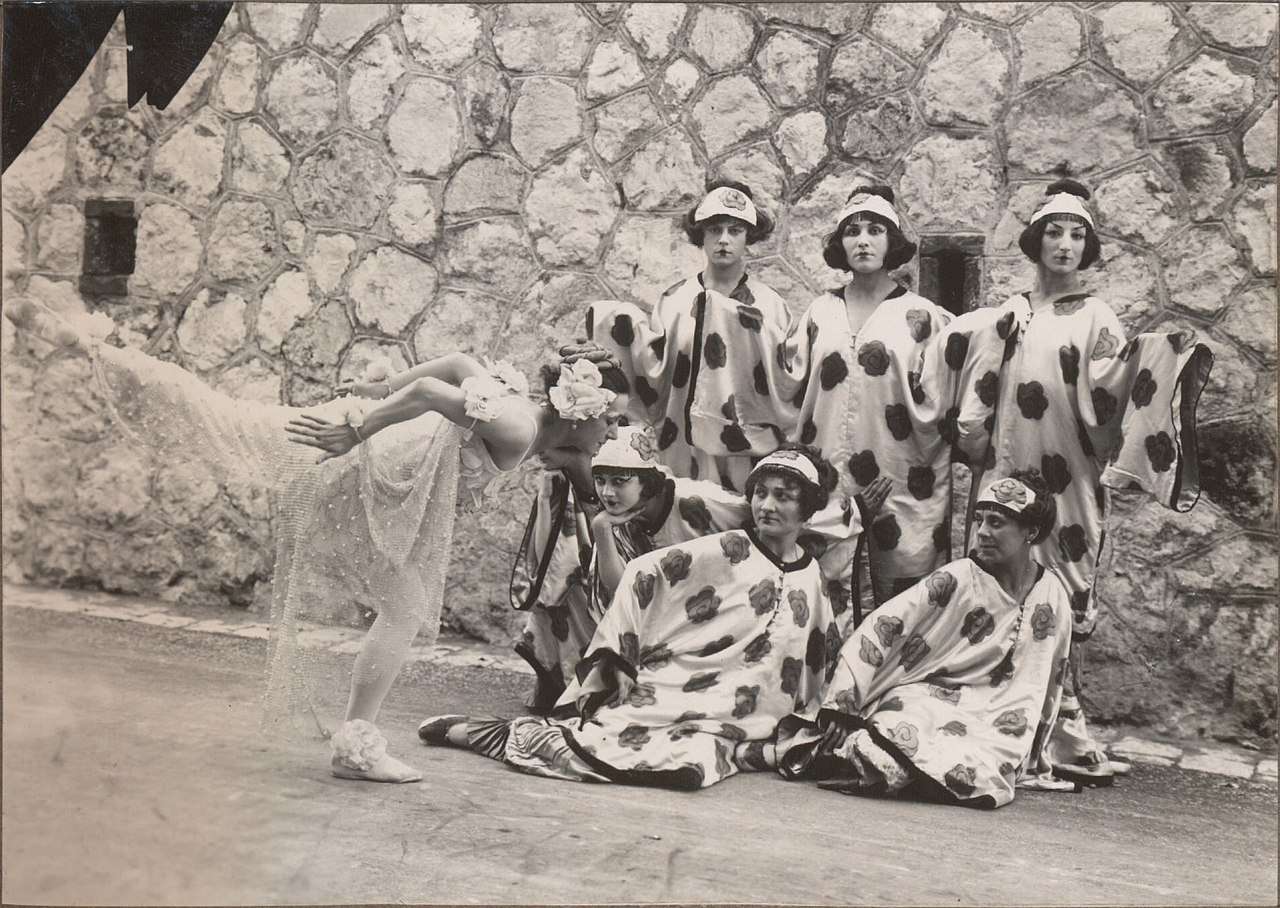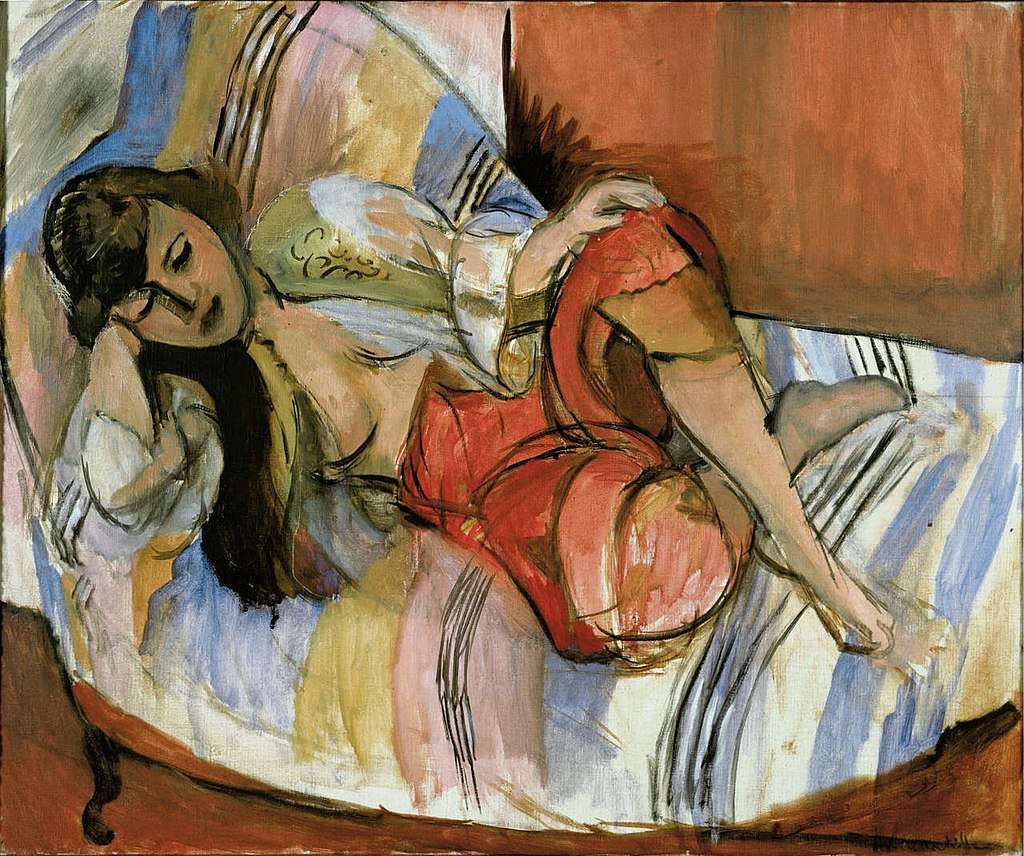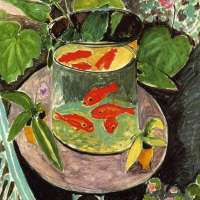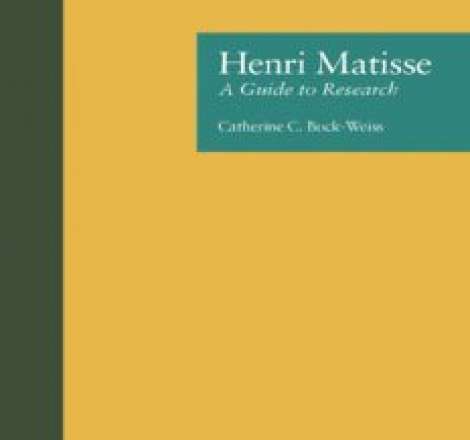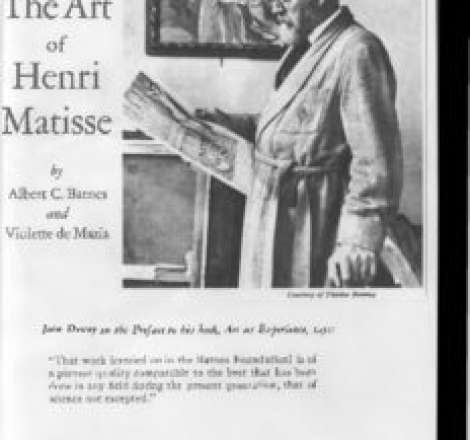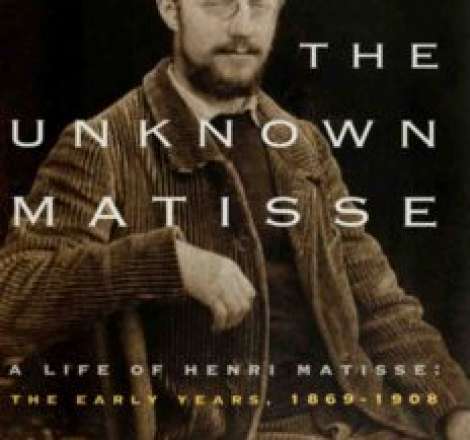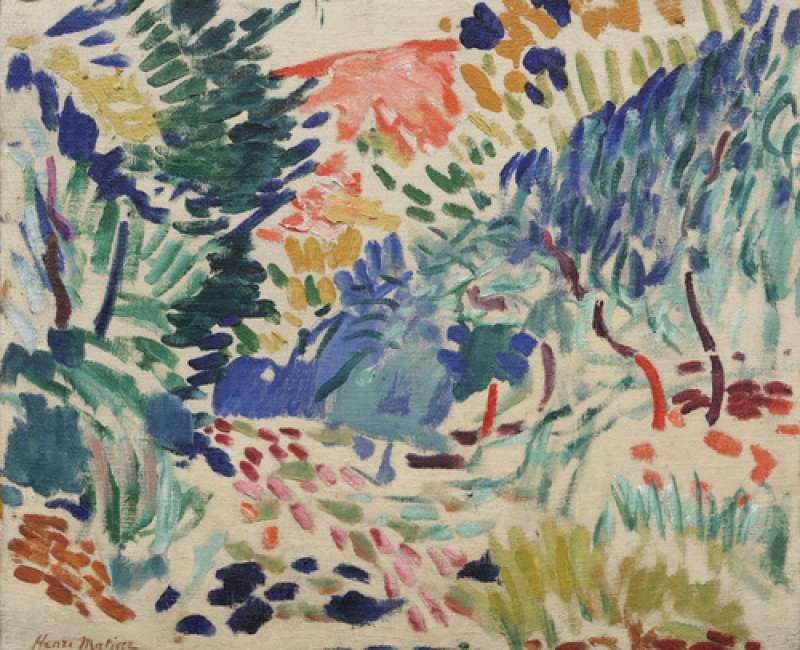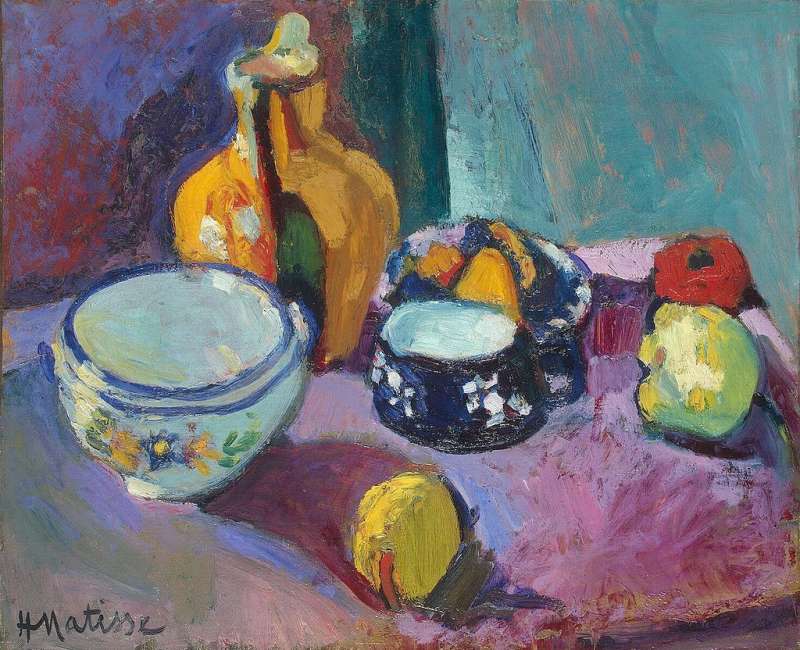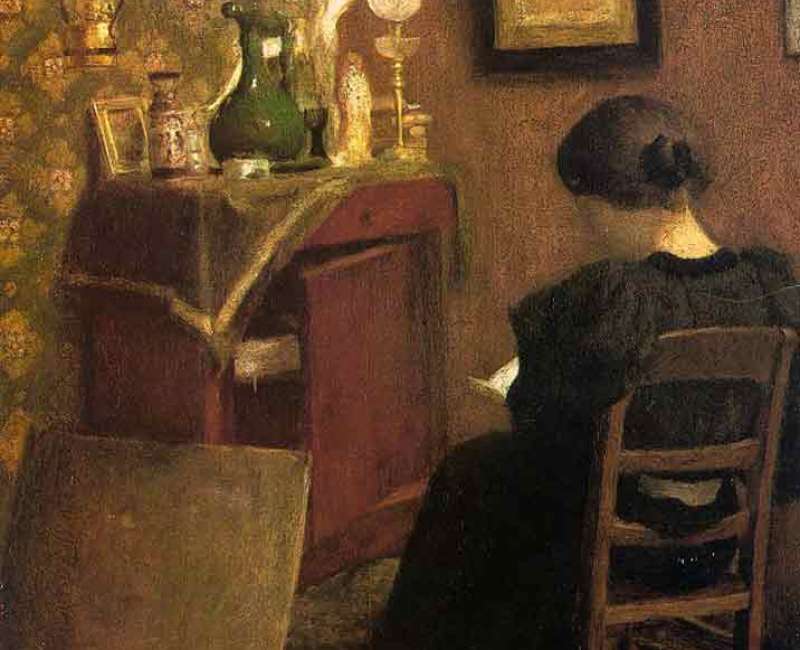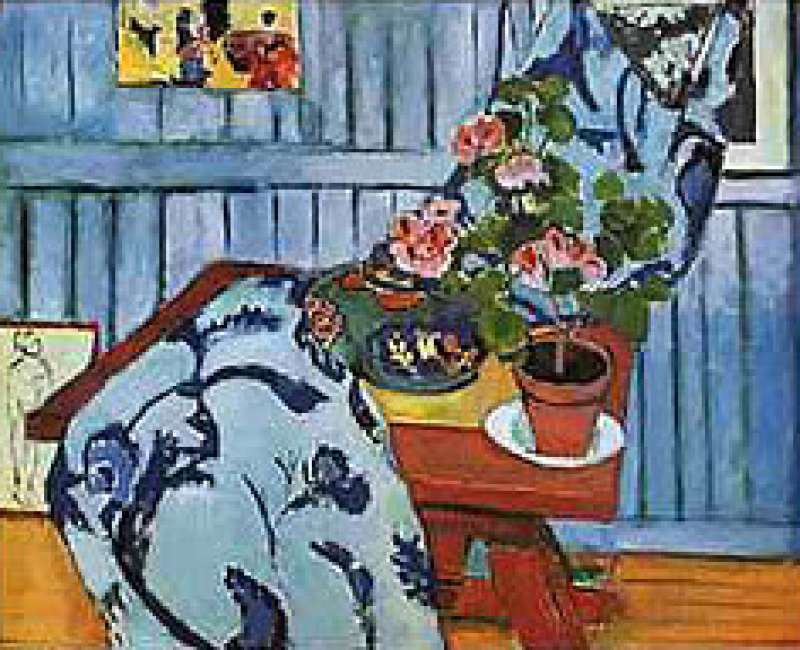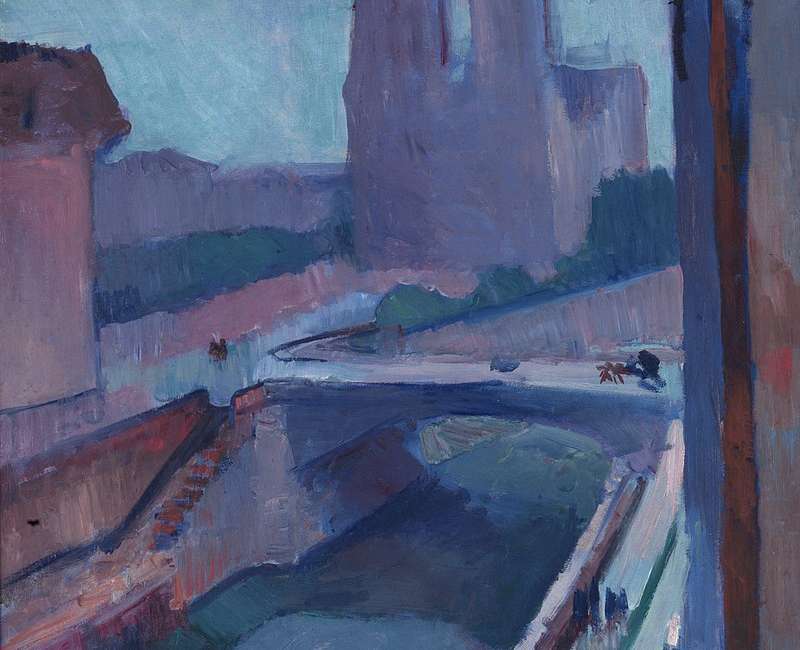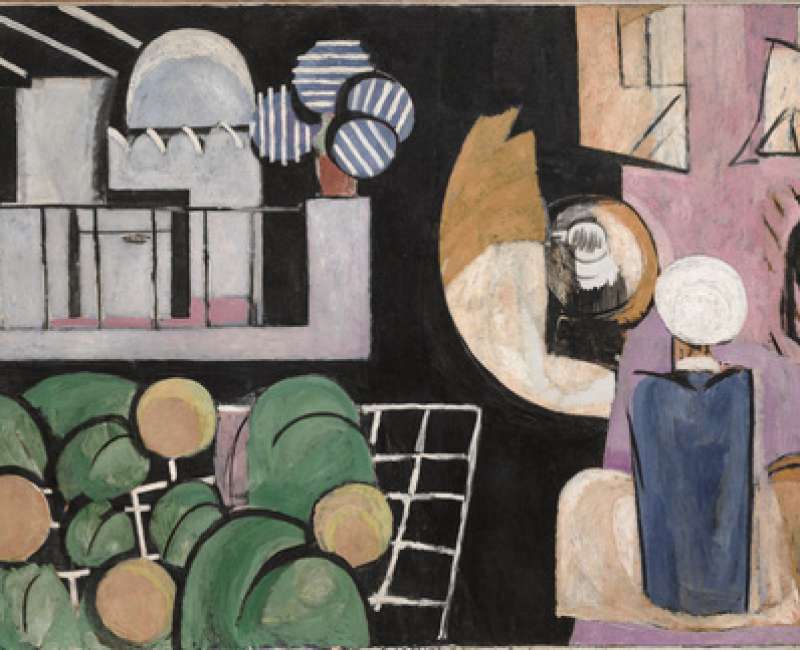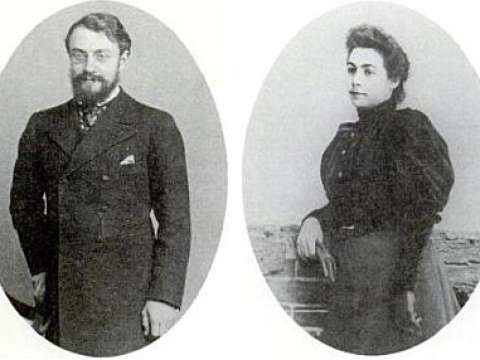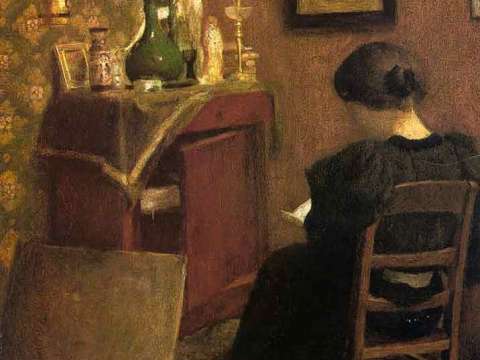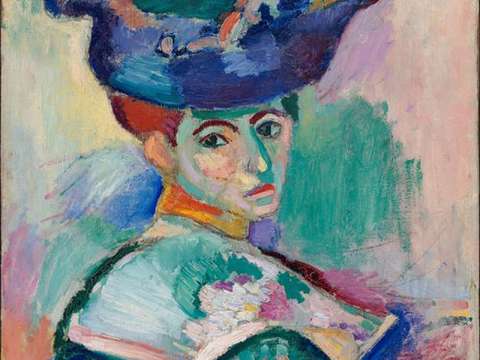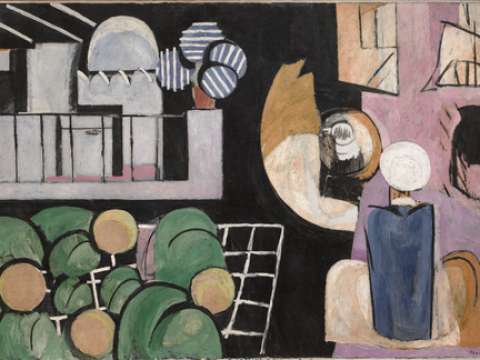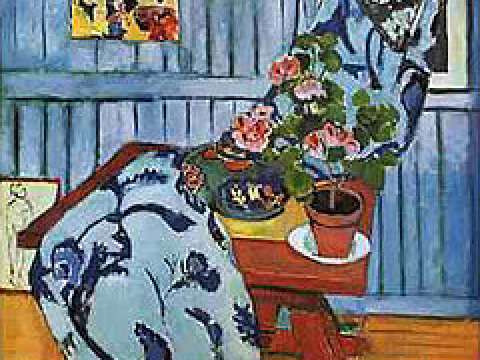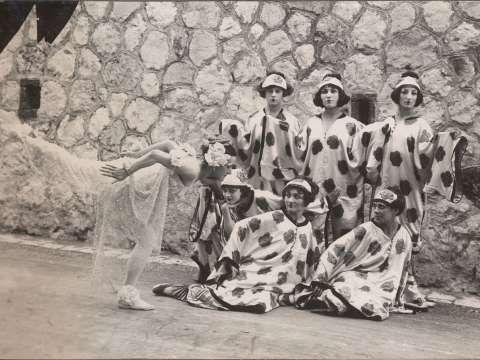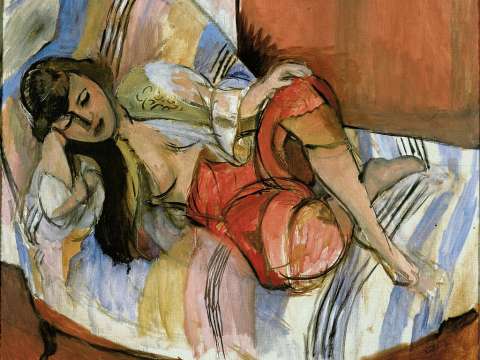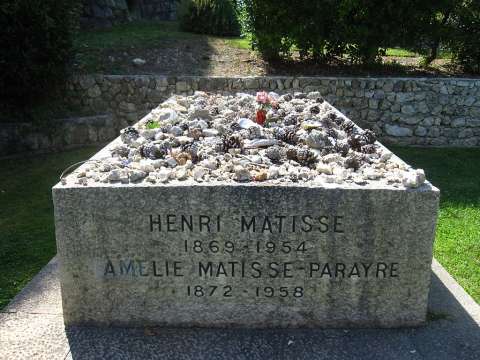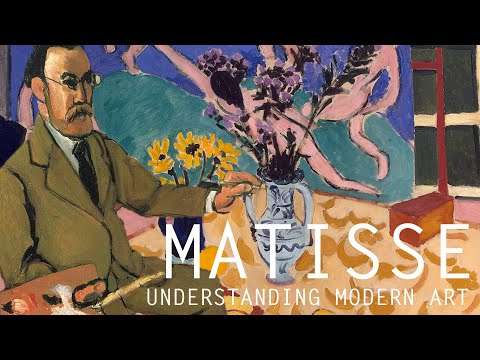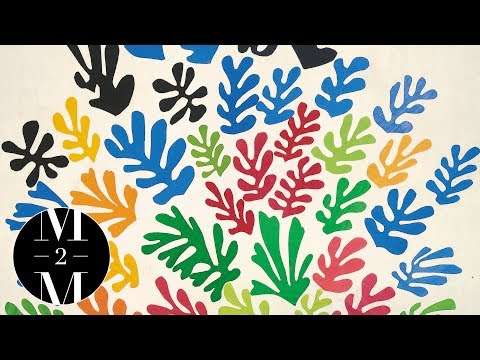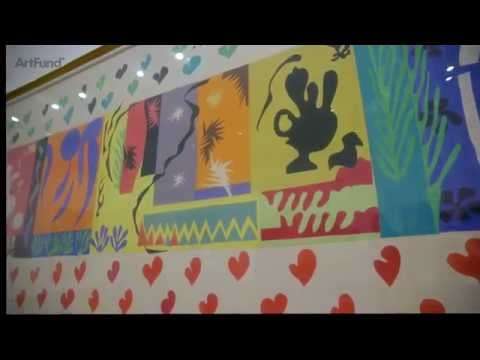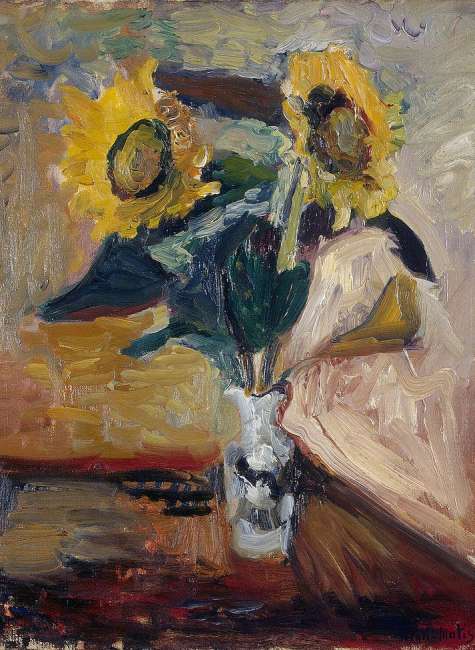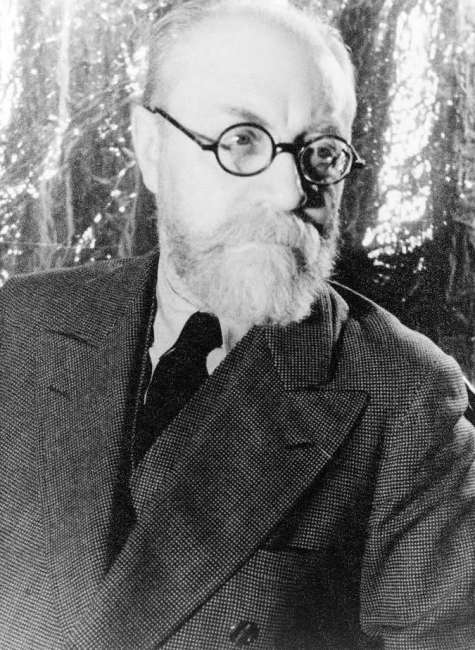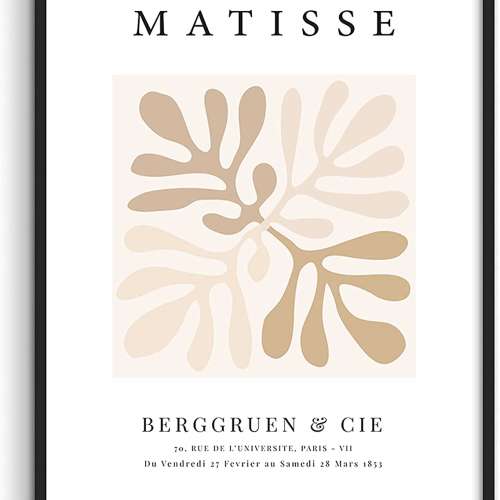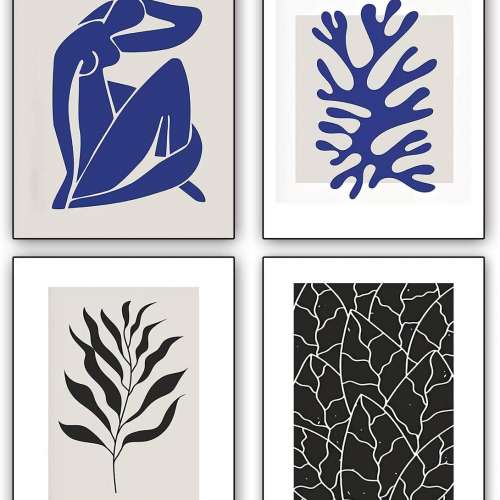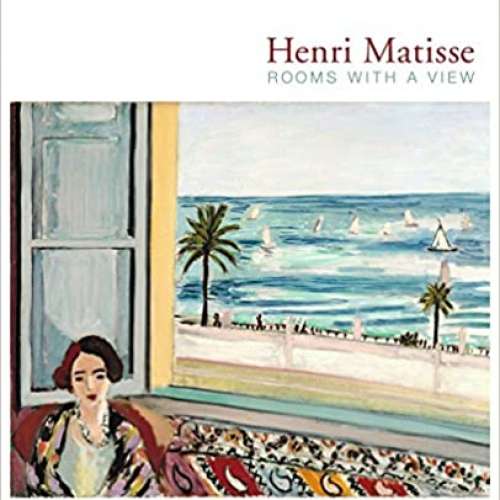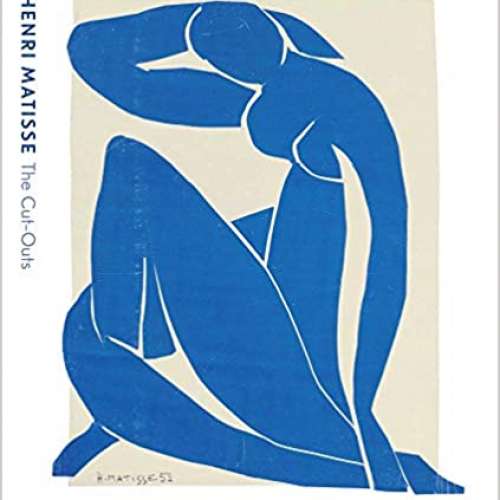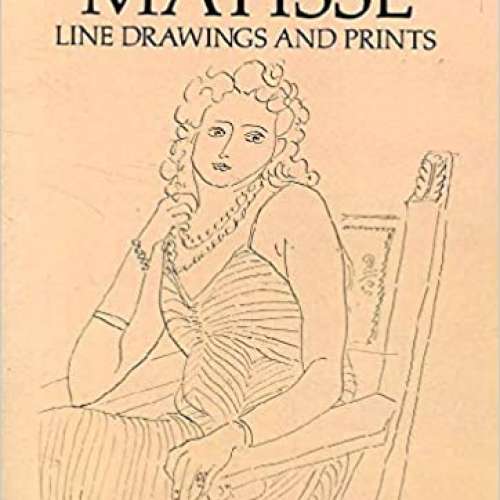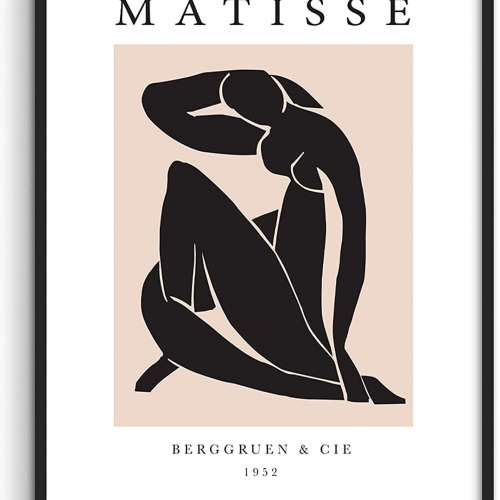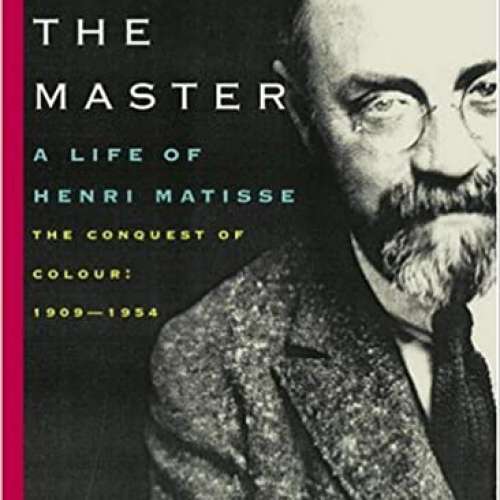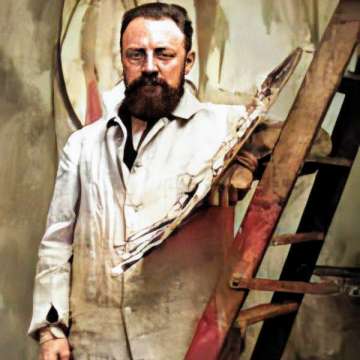

Henri Matisse (1869-1954)
Creativity takes courage.
Henri Émile Benoît Matisse was a French artist, known for both his use of colour and his fluid and original draughtsmanship. He was a draughtsman, printmaker, and sculptor, but is known primarily as a painter. Matisse is commonly regarded, along with Pablo Picasso, as one of the artists who best helped to define the revolutionary developments in the visual arts throughout the opening decades of the twentieth century, responsible for significant developments in painting and sculpture.
The intense colorism of the works he painted between 1900 and 1905 brought him notoriety as one of the Fauves wild beasts. Many of his finest works were created in the decade or so after 1906, when he developed a rigorous style that emphasized flattened forms and decorative pattern. In 1917, he relocated to a suburb of Nice on the French Riviera, and the more relaxed style of his work during the 1920s gained him critical acclaim as an upholder of the classical tradition in French painting. After 1930, he adopted a bolder simplification of form. When ill health in his final years prevented him from painting, he created an important body of work in the medium of cut paper collage.
His mastery of the expressive language of colour and drawing, displayed in a body of work spanning over a half-century, won him recognition as a leading figure in modern art.
Early life and education
Matisse was born in Le Cateau-Cambrésis, in the Nord department in Northern France, the oldest son of a wealthy grain merchant. He grew up in Bohain-en-Vermandois, Picardie, France. In 1887, he went to Paris to study law, working as a court administrator in Le Cateau-Cambrésis after gaining his qualification. He first started to paint in 1889, after his mother brought him art supplies during a period of convalescence following an attack of appendicitis. He discovered "a kind of paradise" as he later described it, and decided to become an artist, deeply disappointing his father.
In 1891, he returned to Paris to study art at the Académie Julian and became a student of William-Adolphe Bouguereau and Gustave Moreau. Initially he painted still lifes and landscapes in a traditional style, at which he achieved reasonable proficiency. Matisse was influenced by the works of earlier masters such as Jean-Baptiste-Siméon Chardin, Nicolas Poussin, and Antoine Watteau, as well as by modern artists, such as Édouard Manet, and by Japanese art. Chardin was one of the painters Matisse most admired; as an art student he made copies of four of Chardin's paintings in the Louvre.

In 1896, Matisse, an unknown art student at the time, visited the Australian painter John Russell on the island Belle Île off the coast of Brittany. Russell introduced him to Impressionism and to the work of Vincent van Gogh—who had been a friend of Russell—and gave him a Van Gogh drawing. Matisse's style changed completely; abandoning his earth-coloured palette for bright colours. He later said Russell was his teacher, and that Russell had explained colour theory to him. The same year, Matisse exhibited five paintings in the salon of the Société Nationale des Beaux-Arts, two of which were purchased by the state.
With the model Caroline Joblau, he had a daughter, Marguerite, born in 1894. In 1898, he married Amélie Noellie Parayre; the two raised Marguerite together and had two sons, Jean born 1899 and Pierre born 1900. Marguerite and Amélie often served as models for Matisse.
In 1898, on the advice of Camille Pissarro, he went to London to study the paintings of J. M. W. Turner and then went on a trip to Corsica. Upon his return to Paris in February 1899, he worked beside Albert Marquet and met André Derain, Jean Puy, and Jules Flandrin. Matisse immersed himself in the work of others and went into debt from buying work from painters he admired. The work he hung and displayed in his home included a plaster bust by Rodin, a painting by Gauguin, a drawing by Van Gogh, and Cézanne's Three Bathers. In Cézanne's sense of pictorial structure and colour, Matisse found his main inspiration.

Many of Matisse's paintings from 1898 to 1901 make use of a Divisionist technique he adopted after reading Paul Signac's essay, "D'Eugène Delacroix au Néo-impressionisme". His paintings of 1902–03, a period of material hardship for the artist, are comparatively somber and reveal a preoccupation with form. Having made his first attempt at sculpture, a copy after Antoine-Louis Barye, in 1899, he devoted much of his energy to working in clay, completing The Slave in 1903.
Early paintings

Fauvism
Fauvism as a style began around 1900 and continued beyond 1910. The movement as such lasted only a few years, 1904–1908, and had three exhibitions. The leaders of the movement were Matisse and André Derain. Matisse's first solo exhibition was at Ambroise Vollard's gallery in 1904, without much success. His fondness for bright and expressive colour became more pronounced after he spent the summer of 1904 painting in St. Tropez with the neo-Impressionists Signac and Henri-Edmond Cross. In that year, he painted the most important of his works in the neo-Impressionist style, Luxe, Calme et Volupté. In 1905, he travelled southwards again to work with André Derain at Collioure. His paintings of this period are characterised by flat shapes and controlled lines, using pointillism in a less rigorous way than before.
Matisse and a group of artists now known as "Fauves" exhibited together in a room at the Salon d'Automne in 1905. The paintings expressed emotion with wild, often dissonant colours, without regard for the subject's natural colours. Matisse showed Open Window and Woman with the Hat at the Salon. Critic Louis Vauxcelles commented on a lone sculpture surrounded by an "orgy of pure tones" as "Donatello chez les fauves" Donatello among the wild beasts, referring to a Renaissance-type sculpture that shared the room with them. His comment was printed on 17 October 1905 in Gil Blas, a daily newspaper, and passed into popular usage. The exhibition garnered harsh criticism—"A pot of paint has been flung in the face of the public", said the critic Camille Mauclair—but also some favourable attention. When the painting that was singled out for special condemnation, Matisse's Woman with a Hat, was bought by Gertrude and Leo Stein, the embattled artist's morale improved considerably.
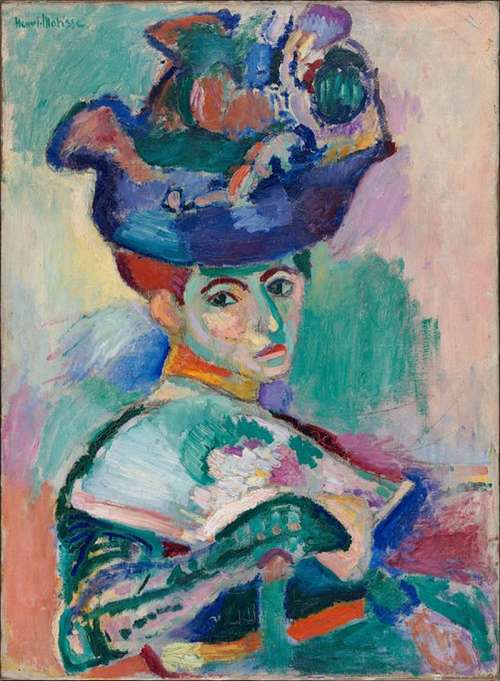
Matisse was recognised as a leader of the Fauves, along with André Derain; the two were friendly rivals, each with his own followers. Other members were Georges Braque, Raoul Dufy, and Maurice de Vlaminck. The Symbolist painter Gustave Moreau 1826–1898 was the movement's inspirational teacher. As a professor at the École des Beaux-Arts in Paris, he pushed his students to think outside of the lines of formality and to follow their visions.
In 1907, Guillaume Apollinaire, commenting about Matisse in an article published in La Falange, wrote, "We are not here in the presence of an extravagant or an extremist undertaking: Matisse's art is eminently reasonable." But Matisse's work of the time also encountered vehement criticism, and it was difficult for him to provide for his family. His painting Nu bleu 1907 was burned in effigy at the Armory Show in Chicago in 1913.

The decline of the Fauvist movement after 1906 did not affect the career of Matisse; many of his finest works were created between 1906 and 1917, when he was an active part of the great gathering of artistic talent in Montparnasse, even though he did not quite fit in, with his conservative appearance and strict bourgeois work habits. He continued to absorb new influences. He travelled to Algeria in 1906 studying African art and Primitivism. After viewing a large exhibition of Islamic art in Munich in 1910, he spent two months in Spain studying Moorish art. He visited Morocco in 1912 and again in 1913 and while painting in Tangier he made several changes to his work, including his use of black as a colour. The effect on Matisse's art was a new boldness in the use of intense, unmodulated colour, as in L'Atelier Rouge 1911.
Matisse had a long association with the Russian art collector Sergei Shchukin. He created one of his major works La Danse specially for Shchukin as part of a two painting commission, the other painting being Music, 1910. An earlier version of La Danse 1909 is in the collection of The Museum of Modern Art in New York City.
Selected works: Paris, 1901–1910

Sculpture

Gertrude Stein, Académie Matisse, and the Cone sisters
Around April 1906, he met Pablo Picasso, who was 11 years younger than Matisse. The two became lifelong friends as well as rivals and are often compared. One key difference between them is that Matisse drew and painted from nature, while Picasso was more inclined to work from imagination. The subjects painted most frequently by both artists were women and still lifes, with Matisse more likely to place his figures in fully realised interiors. Matisse and Picasso were first brought together at the Paris salon of Gertrude Stein with her companion Alice B. Toklas. During the first decade of the twentieth century, the Americans in Paris—Gertrude Stein, her brothers Leo Stein, Michael Stein, and Michael's wife Sarah—were important collectors and supporters of Matisse's paintings. In addition, Gertrude Stein's two American friends from Baltimore, the Cone sisters Claribel and Etta, became major patrons of Matisse and Picasso, collecting hundreds of their paintings and drawings. The Cone collection is now exhibited in the Baltimore Museum of Art.

While numerous artists visited the Stein salon, many of these artists were not represented among the paintings on the walls at 27 rue de Fleurus. Where the works of Renoir, Cézanne, Matisse, and Picasso dominated Leo and Gertrude Stein's collection, Sarah Stein's collection particularly emphasised Matisse.
Contemporaries of Leo and Gertrude Stein, Matisse and Picasso became part of their social circle and routinely joined the gatherings that took place on Saturday evenings at 27 rue de Fleurus. Gertrude attributed the beginnings of the Saturday evening salons to Matisse, remarking:
More and more frequently, people began visiting to see the Matisse paintings—and the Cézannes: Matisse brought people, everybody brought somebody, and they came at any time and it began to be a nuisance, and it was in this way that Saturday evenings began.
Among Pablo Picasso's acquaintances who also frequented the Saturday evenings were Fernande Olivier Picasso's mistress, Georges Braque, André Derain, the poets Max Jacob and Guillaume Apollinaire, Marie Laurencin Apollinaire's mistress and an artist in her own right, and Henri Rousseau.
His friends organized and financed the Académie Matisse in Paris, a private and non-commercial school in which Matisse instructed young artists. It operated from 1907 until 1911. The initiative for the academy came from the Steins and the Dômiers, with the involvement of Hans Purrmann, Patrick Henry Bruce, and Sarah Stein.

Matisse spent seven months in Morocco from 1912 to 1913, producing about 24 paintings and numerous drawings. His frequent orientalist topics of later paintings, such as odalisques, can be traced to this period.
Selected works: Paris, 1910–1917

After Paris
In 1917, Matisse relocated to Cimiez on the French Riviera, a suburb of the city of Nice. His work of the decade or so following this relocation shows a relaxation and softening of his approach. This "return to order" is characteristic of much post-World War I art, and can be compared with the neoclassicism of Picasso and Stravinsky as well as the return to traditionalism of Derain. Matisse's orientalist odalisque paintings are characteristic of the period; while this work was popular, some contemporary critics found it shallow and decorative.

In the late 1920s, Matisse once again engaged in active collaborations with other artists. He worked with not only Frenchmen, Dutch, Germans, and Spaniards, but also a few Americans and recent American immigrants.
After 1930, a new vigor and bolder simplification appeared in his work. American art collector Albert C. Barnes convinced Matisse to produce a large mural for the Barnes Foundation, The Dance II, which was completed in 1932; the Foundation owns several dozen other Matisse paintings. This move toward simplification and a foreshadowing of the cutout technique is also evident in his painting Large Reclining Nude 1935. Matisse worked on this painting for several months and documented the progress with a series of 22 photographs, which he sent to Etta Cone.
War years
Matisse's wife Amélie, who suspected that he was having an affair with her young Russian emigre companion, Lydia Delectorskaya, ended their 41-year marriage in July 1939, dividing their possessions equally between them. Delectorskaya attempted suicide by shooting herself in the chest; remarkably, she survived with no serious after-effects, and instead returned to Matisse and worked with him for the rest of his life, running his household, paying the bills, typing his correspondence, keeping meticulous records, assisting in the studio and coordinating his business affairs.
Matisse was visiting Paris when the Nazis invaded France in June 1940 but managed to make his way back to Nice. His son, Pierre, by then a gallery owner in New York, begged him to flee while he could. Matisse was about to embark for Brazil to escape the Occupation but changed his mind and remained in Nice, in Vichy France. "It seemed to me as if I would be deserting," he wrote Pierre in September 1940. "If everyone who has any value leaves France, what remains of France?" Although he was never a member of the resistance, it became a point of pride to the occupied French that one of their most acclaimed artists chose to stay, though of course, being non-Jewish, he had that option.

While the Nazis occupied France from 1940 to 1944, they were more lenient in their attacks on "degenerate art" in Paris than they were in the German-speaking nations under their military dictatorship. Matisse was allowed to exhibit along with other former Fauves and Cubists whom Hitler had initially claimed to despise, though without any Jewish artists, all of whose works had been purged from all French museums and galleries; any French artists exhibiting in France had to sign an oath assuring their "Aryan" status—including Matisse. He also worked as a graphic artist and produced black-and-white illustrations for several books and over one hundred original lithographs at the Mourlot Studios in Paris.
In 1941, Matisse was diagnosed with duodenal cancer. The surgery, while successful, resulted in serious complications from which he nearly died. Being bedridden for three months resulted in his developing a new art form using paper and scissors.
That same year, a nursing student named Monique Bourgeois responded to an ad placed by Matisse for a nurse. A platonic friendship developed between Matisse and Bourgeois. He discovered that she was an amateur artist and taught her about perspective. After Bourgeois left the position to join a convent in 1944, Matisse sometimes contacted her to request that she model for him. Bourgeois became a Dominican nun in 1946, and Matisse painted a chapel in Vence, a small town he moved to in 1943, in her honor.

Matisse remained for the most part isolated in southern France throughout the war but his family was intimately involved with the French resistance. His son Pierre, the art dealer in New York, helped the Jewish and anti-Nazi French artists he represented to escape occupied France and enter the United States. In 1942, he held an exhibition in New York, "Artists in Exile," which was to become legendary. Matisse's estranged wife, Amélie, was a typist for the French Underground and jailed for six months. Matisse was shocked when he heard that his daughter Marguerite, who had been active in the Résistance during the war, was tortured almost to death by the Gestapo in a Rennes prison and sentenced to the Ravensbrück concentration camp in Germany. Marguerite managed to escape from the train to Ravensbrück, which was halted during an Allied air raid; she survived in the woods in the chaos of the closing days of the war, until rescued by fellow resisters. Matisse's student Rudolf Levy was killed in the Auschwitz concentration camp in 1944.
Final years
Cut-outs
Diagnosed with abdominal cancer in 1941, Matisse underwent surgery that left him chair- and bedbound. Painting and sculpture had become physical challenges, so he turned to a new type of medium. With the help of his assistants, he began creating cut paper collages, or decoupage. He would cut sheets of paper, pre-painted with gouache by his assistants, into shapes of varying colours and sizes, and arrange them to form lively compositions. Initially, these pieces were modest in size, but eventually transformed into murals or room-sized works. The result was a distinct and dimensional complexity—an art form that was not quite painting, but not quite sculpture.
Although the paper cut-out was Matisse's major medium in the final decade of his life, his first recorded use of the technique was in 1919 during the design of decor for the Le chant du rossignol, an opera composed by Igor Stravinsky. Albert C. Barnes arranged for cardboard templates to be made of the unusual dimensions of the walls onto which Matisse, in his studio in Nice, fixed the composition of painted paper shapes. Another group of cut-outs were made between 1937 and 1938, while Matisse was working on the stage sets and costumes for Sergei Diaghilev's Ballets Russes. However, it was only after his operation that, bedridden, Matisse began to develop the cut-out technique as its own form, rather than its prior utilitarian origin.

He moved to the hilltop of Vence, France in 1943, where he produced his first major cut-out project for his artist's book titled Jazz. However, these cut-outs were conceived as designs for stencil prints to be looked at in the book, rather than as independent pictorial works. At this point, Matisse still thought of the cut-outs as separate from his principal art form. His new understanding of this medium unfolds with the 1946 introduction for Jazz. After summarizing his career, Matisse refers to the possibilities the cut-out technique offers, insisting "An artist must never be a prisoner of himself, prisoner of a style, prisoner of a reputation, prisoner of success…"
The number of independently conceived cut-outs steadily increased following Jazz, and eventually led to the creation of mural-size works, such as Oceania the Sky and Oceania the Sea of 1946. Under Matisse's direction, Lydia Delectorskaya, his studio assistant, loosely pinned the silhouettes of birds, fish, and marine vegetation directly onto the walls of the room. The two Oceania pieces, his first cut-outs of this scale, evoked a trip to Tahiti he made years before.
Chapel and museum
In 1948, Matisse began to prepare designs for the Chapelle du Rosaire de Vence, which allowed him to expand this technique within a truly decorative context. The experience of designing the chapel windows, chasubles, and tabernacle door—all planned using the cut-out method—had the effect of consolidating the medium as his primary focus. Finishing his last painting in 1951 and final sculpture the year before, Matisse utilized the paper cut-out as his sole medium for expression up until his death.
This project was the result of the close friendship between Matisse and Bourgeois, now Sister Jacques-Marie, despite him being an atheist. They had met again in Vence and started the collaboration, a story related in her 1992 book Henri Matisse: La Chapelle de Vence and in the 2003 documentary "A Model for Matisse".
In 1952, he established a museum dedicated to his work, the Matisse Museum in Le Cateau, and this museum is now the third-largest collection of Matisse works in France.
According to David Rockefeller, Matisse's final work was the design for a stained-glass window installed at the Union Church of Pocantico Hills near the Rockefeller estate north of New York City. "It was his final artistic creation; the maquette was on the wall of his bedroom when he died in November of 1954", Rockefeller writes. Installation was completed in 1956.
Matisse died of a heart attack at the age of 84 on 3 November 1954. He is interred in the cemetery of the Monastère Notre Dame de Cimiez, near Nice.
Legacy
The first painting of Matisse acquired by a public collection was Still Life with Geraniums 1910, exhibited in the Pinakothek der Moderne.
His The Plum Blossoms 1948 was purchased on 8 September 2005 for the Museum of Modern Art by Henry Kravis and the new president of the museum, Marie-Josée Drouin. Estimated price was US$25 million. Previously, it had not been seen by the public since 1970. In 2002, a Matisse sculpture, Reclining Nude I Dawn, sold for US$9.2 million, a record for a sculpture by the artist.
Matisse's daughter Marguerite often aided Matisse scholars with insights about his working methods and his works. She died in 1982 while compiling a catalogue of her father's work.

Matisse's son Pierre Matisse 1900–1989 opened a modern art gallery in New York City during the 1930s. The Pierre Matisse Gallery, which was active from 1931 until 1989, represented and exhibited many European artists and a few Americans and Canadians in New York often for the first time. He exhibited Joan Miró, Marc Chagall, Alberto Giacometti, Jean Dubuffet, André Derain, Yves Tanguy, Le Corbusier, Paul Delvaux, Wifredo Lam, Jean-Paul Riopelle, Balthus, Leonora Carrington, Zao Wou Ki, Sam Francis, and Simon Hantaï, sculptors Theodore Roszak, Raymond Mason, and Reg Butler, and several other important artists, including the work of Henri Matisse.
Henri Matisse's grandson Paul Matisse is an artist and inventor living in Massachusetts. Matisse's great-granddaughter Sophie Matisse is active as an artist. Les Heritiers Matisse functions as his official Estate. The U.S. copyright representative for Les Heritiers Matisse is the Artists Rights Society.
Recent exhibitions
Henri Matisse: The Cut-Outs was exhibited at London's Tate Modern, from April to September 2014. The show was the largest and most extensive of the cut-outs ever mounted, including approximately 100 paper maquettes—borrowed from international public and private collections—as well as a selection of related drawings, prints, illustrated books, stained glass, and textiles. In total, the retrospective featured 130 works encompassing his practice from 1937 to 1954. The Tate Modern show was the first in its history to attract more than half a million people.
The show then traveled to New York's Museum of Modern Art, where it was on display through 10 February 2015. The newly conserved cut-out, The Swimming Pool, which had been off view for more than 20 years prior, returned to the galleries as the centerpiece of the exhibition.
Partial list of works
Illustrations
- Jean Cocteau, Bertrand Guégan 1892–1943; L'almanach de Cocagne pour l'an 1920–1922, Dédié aux vrais Gourmands Et aux Francs Buveurs
Portrayal in media and literature
Film dramatisations
- A film called Masterpiece, about the artist and his relationship with Monique Bourgeois, was proposed in 2011. Deepa Mehta intended to direct with Al Pacino to play Henri Matisse.
- Matisse was played by Yves-Antoine Spoto in the 2011 film Midnight in Paris.
- Matisse was portrayed by Joss Ackland in the 1996 Merchant Ivory production of Surviving Picasso.
Exhibition on screen
- The Museum of Modern Art's Matisse retrospective was part of the film series "Exhibition on Screen", which broadcasts productions to movie theaters.
- The film Matisse From MoMA and Tate Modern combines high-definition footage of the galleries with commentary from curators, museum administrators and, through narration of words from the past, Matisse himself. "We want to show the exhibition as well as we possibly can to the audience who can’t get there", said director Phil Grabsky. Inspired by a similar "event cinema" produced by the Met, Grabsky started his series to simulate the experience of strolling through an art exhibit.
Literature
- The Ray Bradbury short story "The Watchful Poker Chip of H. Matisse" contains an allusion to the artist painting an eye on a poker chip for an American man to use as a monocle.
- In Michael Ondaatje's Running in the Family, there is a section called 'Don't talk to me about Matisse'
- In Henry Miller's Tropic of Cancer there are multiple pages lionizing the works and importance of "the bright sage" Matisse, his hero.
Music
- The British composer Peter Seabourne b.1960 wrote a septet The Sadness of the King 2007 inspired by the late paper cut La Tristesse du Roi.
Books and essays
- Notes of a Painter "Note d'un peintre", 1908
- Painter's Notes on Drawing "Notes d'un peintre sur son dessin", July 1939
- Jazz, 1947
- Matisse on Art, collected by Jack D. Flam, 1973, ISBN 0-7148-1518-7
- Chatting with Henri Matisse: The Lost 1941 Interview, Getty Publications, 2013, ISBN 978-1-60606-128-2SBN 0-691-11830-2.
More facts
The Joy of Life (1906)
Nu bleu (1907)
La Danse (1909)
L'Atelier Rouge (1911)
Matisse the Master: A Life of Henri Matisse
Henri Matisse: Rooms with a View
Matisse Line Drawings and Prints
Henri Matisse (1946)
An Essay on Matisse (1996)



